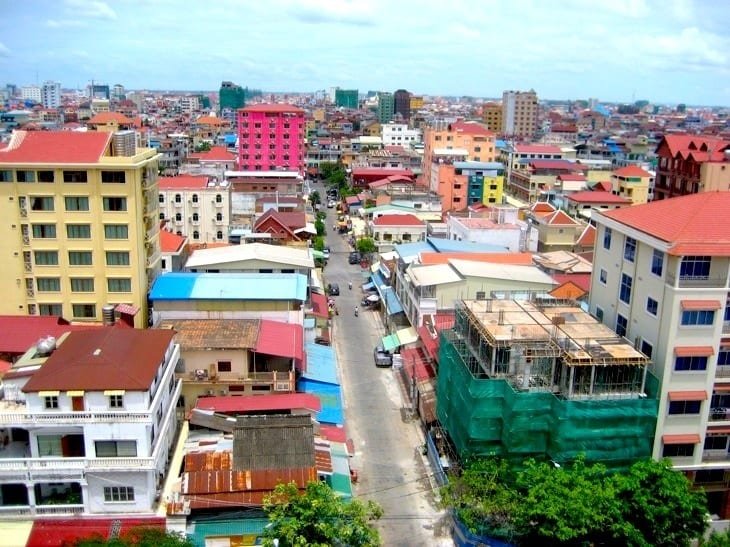Phnom Penh is a vibrant city rich in history and culture, boasting delicious cuisine, remarkable architecture, and lively markets.
Even though it isn’t very large, Phnom Penh, Cambodia’s lively capital, offers a myriad of activities to experience.
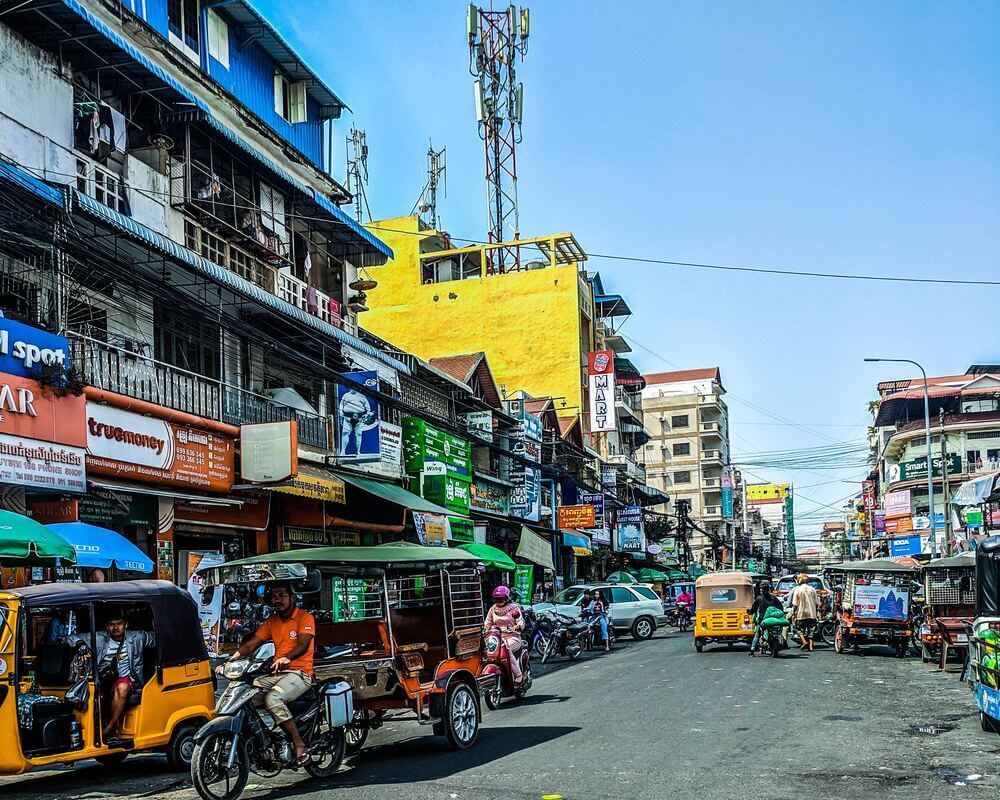
While many travelers use the capital as a base to visit Siem Reap or Koh Rong island, there’s much more to enjoy. Spend a few days exploring Phnom Penh’s significant historical sites, from the Royal Palace to the Killing Fields.
This guide will highlight activities you shouldn’t miss in Phnom Penh. Grab some paper and a pen to note these essential attractions.
1. Visit The Tuol Sleng Genocide Museum (S21 Prison)
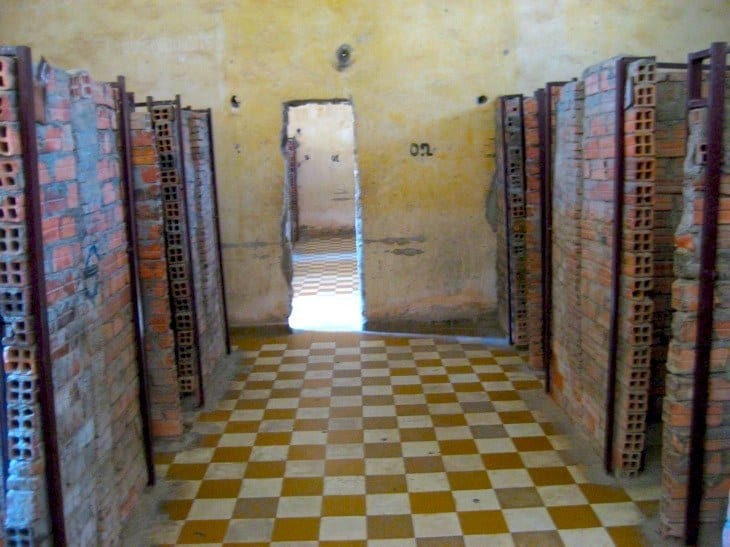
To truly grasp Cambodia’s essence, understanding its sorrowful history and the genocide under the Khmer Rouge during the late 1970s is essential.
The Tuol Sleng Genocide Museum, formerly a high school, was one of the most horrific re-education camps where countless individuals were tortured and killed.
Most detainees were brought here for interrogation, eventually leading to the Killing Fields just outside of the city.
Both locations are tragic and visitors can feel the weight of their stories, as the extent of the regime’s cruelty is shown in great detail. Thus, consider your emotional readiness before visiting.
If you decide to go, you might encounter a man who shares his experiences as a former prisoner; he survived by working as a mechanic, repairing typewriters.
At the very least, opt for the audioguide.
While it’s a somber visit, acknowledging this period in history is vital to foster an understanding that such atrocities should never occur again. It’s especially thoughtful to learn this, allowing you to empathize with the Cambodian people, whose ancestors faced these hardships.
2. Explore The Royal Palace and Silver Pagoda
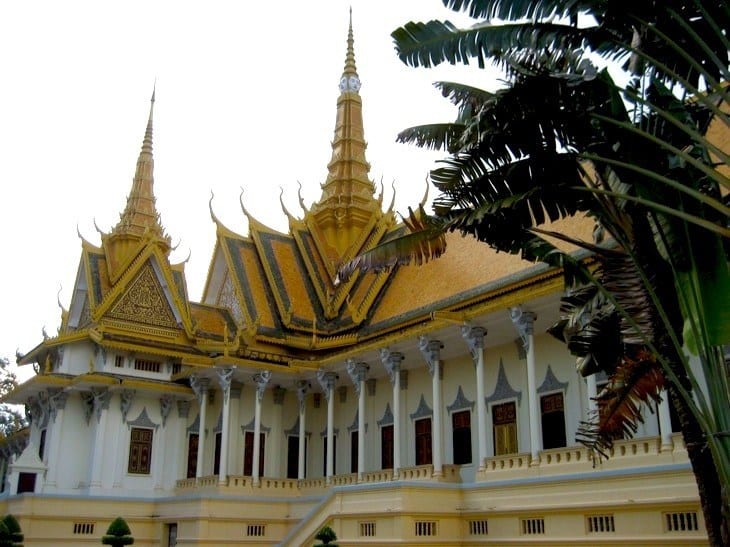
A more uplifting destination is the Royal Palace, which offers a striking contrast to the dusty streets of Phnom Penh, with its well-kept gardens, ornate throne hall, and gleaming structures.
This splendid complex showcases stunning Khmer architecture and serves as the official residence of the Cambodian monarch. As it is a sacred site, be sure to cover your shoulders and knees prior to entry.
Don’t miss the Silver Pagoda, also known as the Pagoda of the Emerald Buddha (Wat Preah Keo Morakot).
This site is renowned for the silver tiles that adorn its floor and the silver stupas on either side, believed to house the remains of past kings.
3. Go Temple Hopping
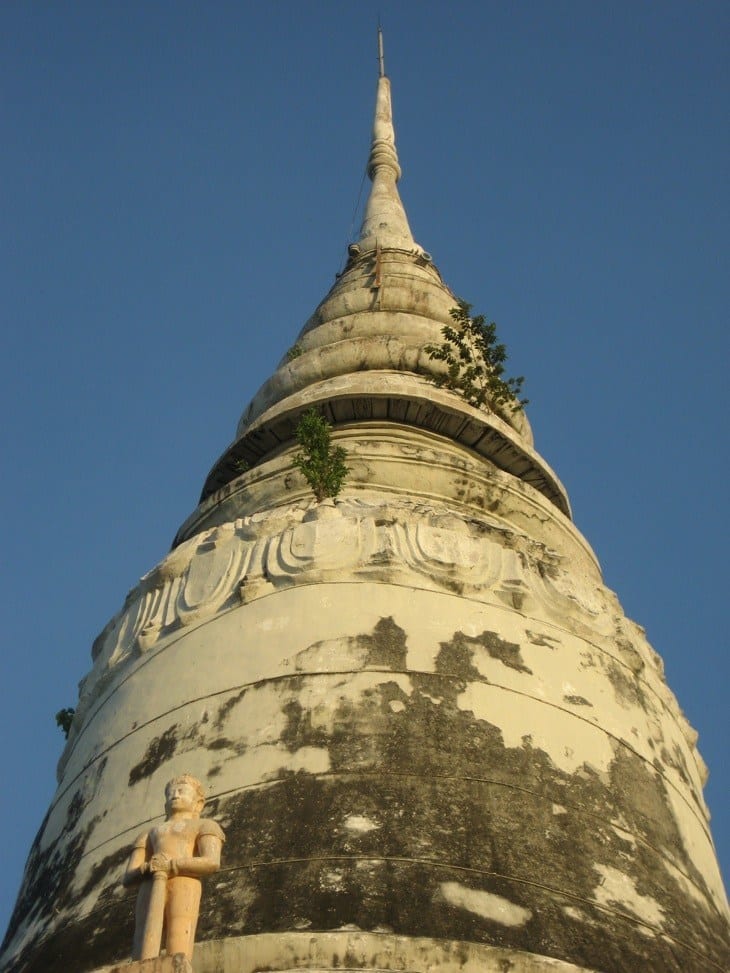
Phnom Penh is dotted with numerous beautiful Buddhist temples (wats), all worth visiting.
These temples are often overlooked by tourists, so you might find them pleasantly quiet. The most notable is Wat Phnom, which is said to be the site where Phnom Penh was founded in 1422.
Other temples that are architecturally stunning include Wat Lanka, Wat Ounalom, and Wat Botum.
When visiting temples, remember to remove your shoes, cover your shoulders and knees, and never point the soles of your feet at anyone, especially the Buddha statues.
4. Take a stroll along the riverfront
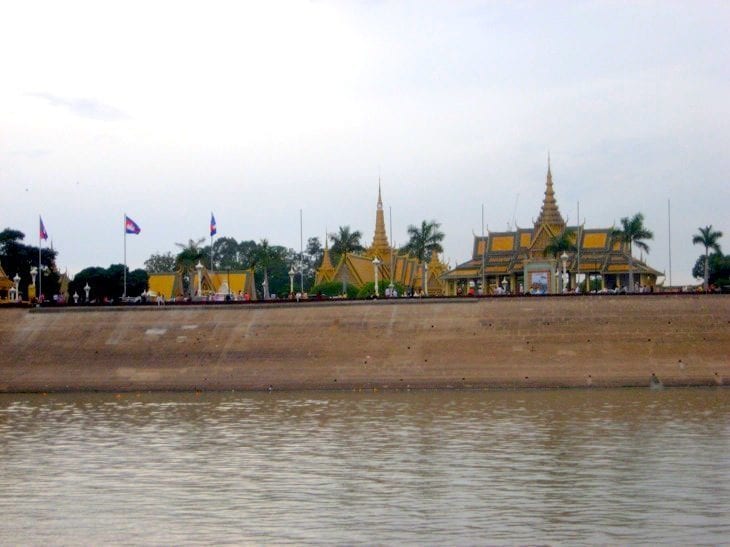
spot for people-watching.
My favorite area to explore is the riverfront, ideal for a leisurely walk, enjoying a meal, sipping on a cold drink, and visiting local markets like the old market (phsar chas) in the historic French quarter.
This vibrant area buzzes with both locals and tourists. If you’re looking for some activity, you can also join…
Join one of the local outdoor aerobic classes for just $0.25.
5. Sample Khmer Cuisine
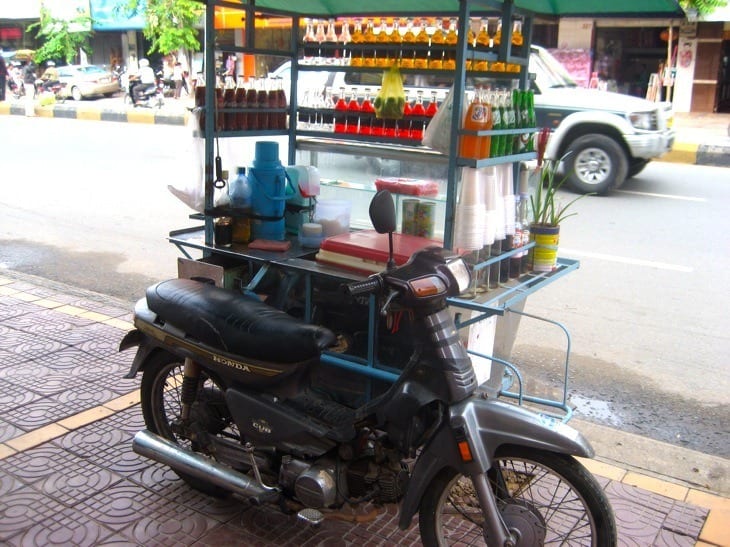
Khmer cuisine may not be widely recognized outside Cambodia, but it is definitely worth a try.
In Phnom Penh, street vendors operate mobile kitchens on their motorbikes, offering delicious food wherever they park.
Meals are not only tasty but also incredibly affordable, often costing around $1 each.
For drinks, don’t miss out on the refreshing Khmer iced coffee, fresh sugarcane juice with lime, or fresh coconut juice, which are available from mobile vendors for about $0.50.
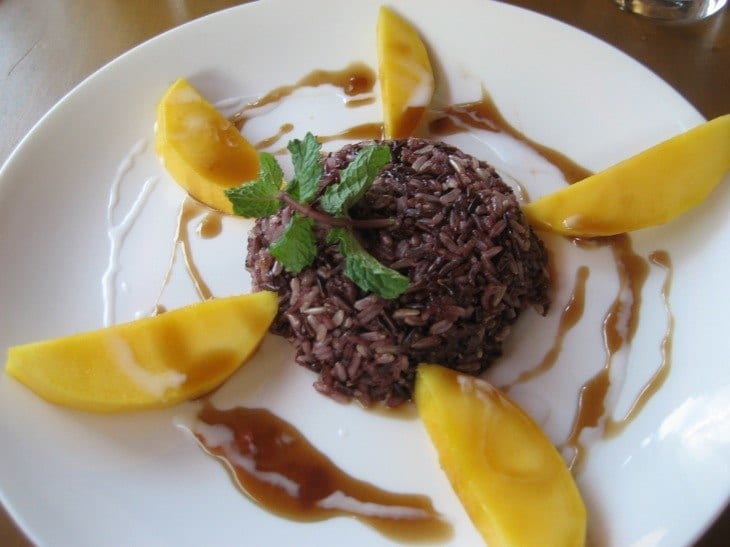
I highly recommend Samaky Restaurant, a social enterprise that trains street children in the catering industry while teaching them English.
The staff there are incredibly friendly, and dining here supports a worthwhile cause.
Be sure to try their national dish, Fish Amok, a sweet coconut curry. Pair it with mango sticky rice, similar to what you’ll find in Thailand, and enjoy a chilled cocktail.
6. Experience Phnom Penh’s Thriving Nightlife
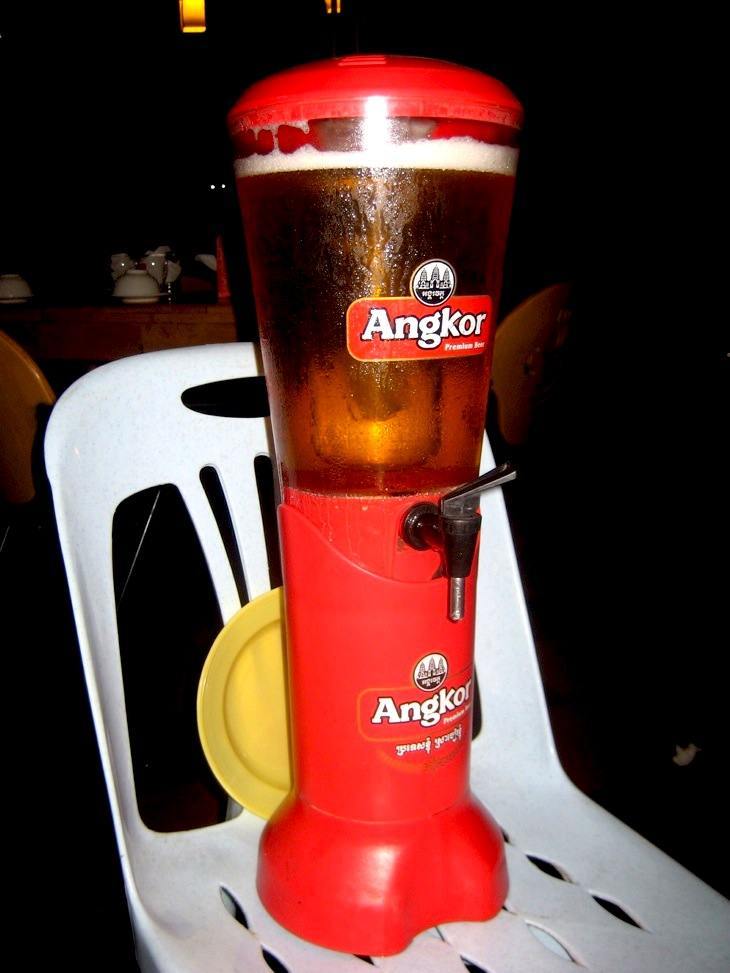
With a large expat population, Phnom Penh is filled with numerous bars.
Many of these have happy hours where a glass of cold Angkor beer typically costs just $0.75, while cocktails are around $2. You’ll find most bars along the riverfront or on streets 278 and 51.
If you want to mingle with locals, consider visiting one of the many Khmer beer gardens, where a pitcher of beer is roughly $1.50. Just be prepared for some karaoke fun!

Alternatively, enjoy a sunset cruise on the Mekong, Tonle Sap, and Four Faces Rivers with unlimited beer for just $15!
If you’re looking for a more private experience, you can rent a boat along the river that accommodates up to 50 people.
Prices are around $20 for a two-hour cruise, and you can bring your own refreshments and food along. The boat takes you on a serene journey down both the Mekong River and the Tonle Sap River—an excellent way to unwind at night.
7. Attend a Traditional Cambodian Apsara Dance Performance
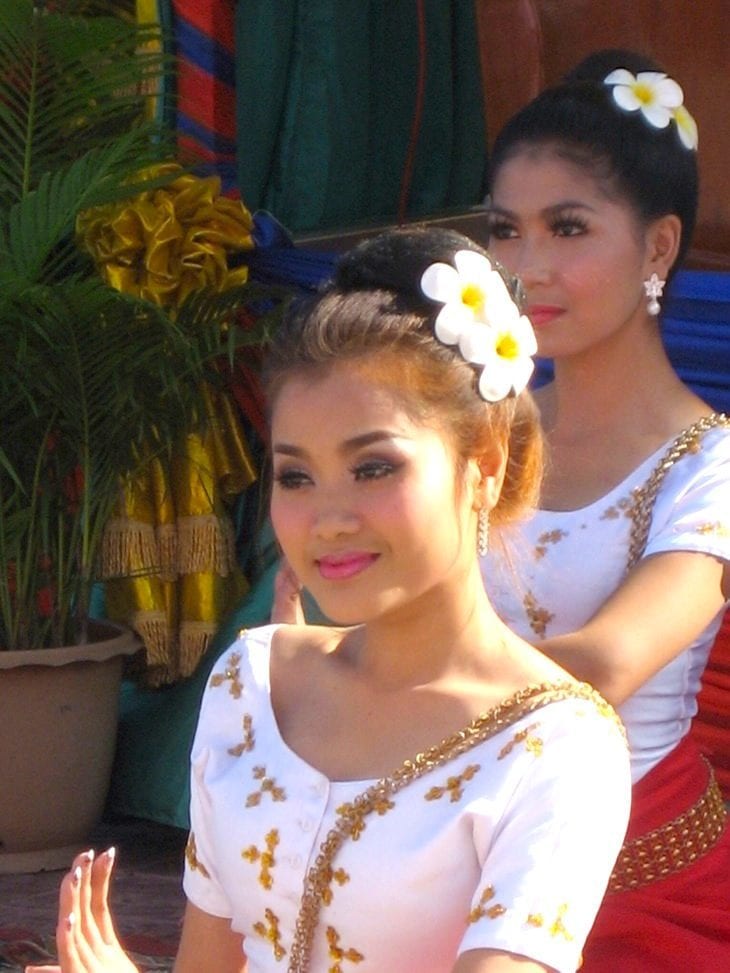
If you’re interested in experiencing traditional Cambodian dance, check out the Chaktomuk Theatre on Sisowath Quay, where you can watch the Apsara Dance featuring elaborate costumes.
8. Explore Local Markets
For souvenirs, there are three main markets to visit. The largest one is the Russian Market on Street 163, where you’ll find everything from souvenirs to engine parts, antiques, and fresh produce.
The Central Market on Street 128 is housed in a stunning art deco building and offers products similar to the Russian Market, though it’s smaller.
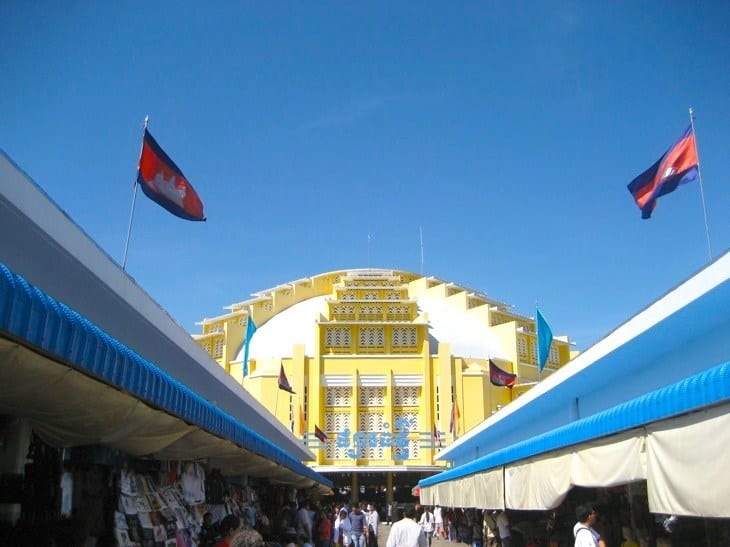
The third market is the Phnom Penh Night Market, located on the riverfront at the corner of Street 108. It operates on Friday and Saturday nights, making it a fantastic spot to try out street food and shop for souvenirs.
Don’t forget to haggle at all three markets to secure the best deals! If you enjoy art and handicrafts, make sure to visit Street 178, where you’ll find galleries and workshops.
The avenue across from the University of Arts.

9. Experience the Water Festival in October
The highlight of the year is the Water Festival in October.
This three-day celebration is essential as it marks the conclusion of the rainy season, the beginning of the fishing period, and the fascinating natural occurrence of the Tonle Sap River changing its flow!
Villagers across the nation dedicate nearly a year to prepare their boats for the exciting boat races. These boats are beautifully adorned dugout canoes with large eyes on their fronts to protect against evil spirits.
10. Observe the Royal Ploughing Ceremony
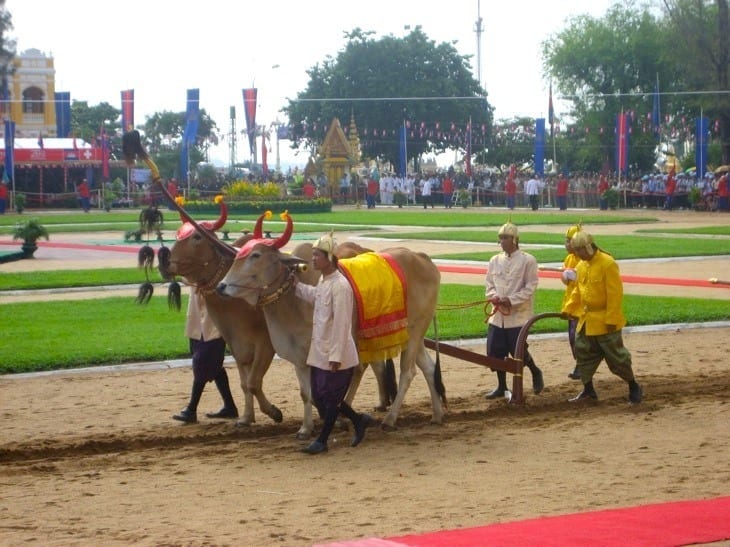
Another major event is the Royal Ploughing Ceremony, which signifies the start of the rainy season and the rice planting cycle (generally held in May).
The Royal family typically participates, and attendees can witness parades at the National Museum grounds, Buddhist rituals, marching bands, and the ceremonial ploughing where two royal oxen till the soil and receive an array of foods and spirits.
The choices made by the oxen are interpreted as omens for a fruitful or poor harvest.
11. Plan a day trip to Tonle Bati
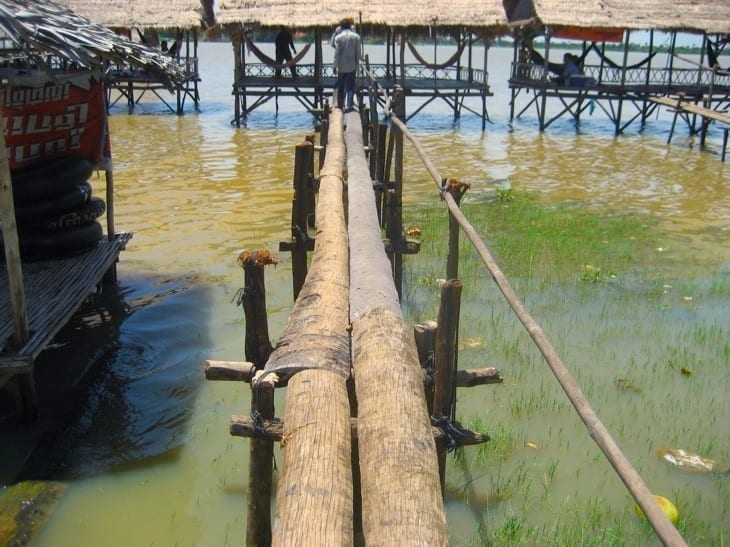
A visit to Tonle Bati and the nearby Ta Prohm temple ruins is highly suggested.
Tonle Bati is a popular lake where locals often gather for weekend picnics, boat rides, or a refreshing dip in the water.
While swimming in the lake isn’t advised for health reasons, the lakeside picnic areas provide a lovely place to relax in a hammock and enjoy snacks from various street vendors or restaurants.
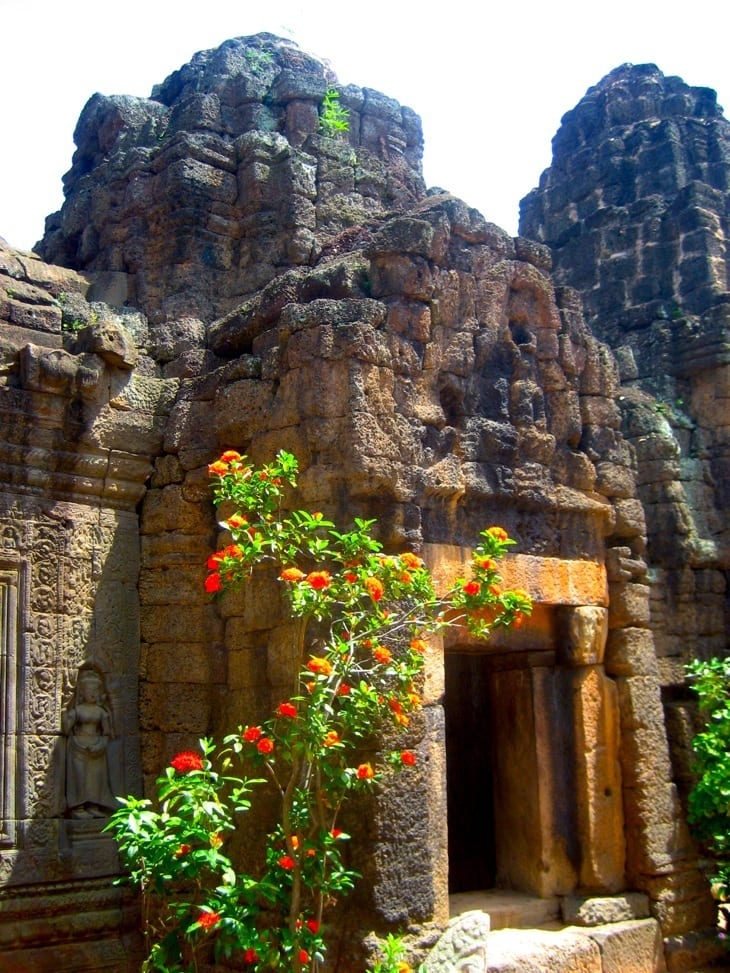
Located just a short distance from the lake lies the Ta Prohm Ruin, dating back to the late 12th century. While you can find larger ruins at the Angkor Wat complex in Siem Reap, this site offers a more intimate setting for a true Tomb Raider experience.
You can reach Ta Prohm by arranging a private car through tour providers or negotiating a fare with any tuk-tuk driver in the area. The journey takes about an hour by car and 1.5 hours by tuk-tuk, costing approximately $30 for either option.
12. Take a day trip to Oudong
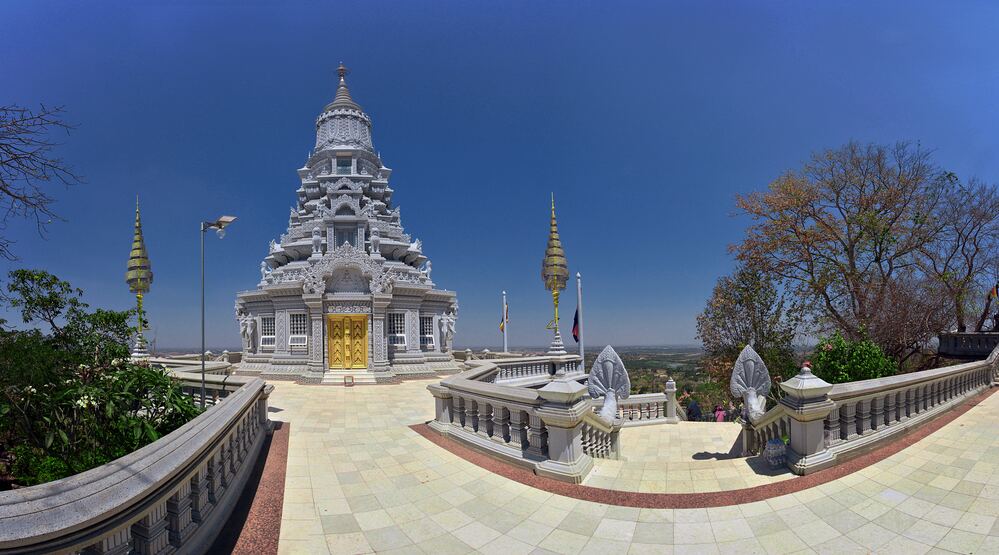
Besides Tonle Bati, another easily accessible destination for a half-day trip is Oudong.
Once the capital of Cambodia until Phnom Penh assumed the role in 1866, Oudong is now the final resting place of the most revered relics of Buddha’s bones in the country. These bones are housed in a temple situated on a mountain.
Following a 10 to 20 minute hike from the mountain’s base, you’ll be rewarded with spectacular views of the surrounding wats, rice fields, and floodplains. You can reach Oudong by tuk-tuk or through a tour operator, costing around $30.
13. Visit Phnom Tamao Wildlife Rescue Center
If you’re passionate about animals while in Phnom Penh, a trip to the Tamao Wildlife Rescue Center, operated by the Wildlife Alliance, is a must.
This outstanding sanctuary houses over 1,200 animals, many rescued from illegal poaching or from environments threatened by human expansion.
At Tamao, you can closely observe a diverse range of animals, including tigers, elephants, bears, gibbons, and more.
You’ll discover the remarkable efforts being made to rehabilitate these beautiful creatures and protect their natural habitats.
A visit to Tamao not only allows you to meet Cambodia’s native wildlife but also supports vital wildlife conservation initiatives.
Your experience at the center can inspire awareness and motivate others to contribute to efforts that safeguard endangered species.
14. Honor those at the Choeung Ek Genocidal Center (Killing Fields)
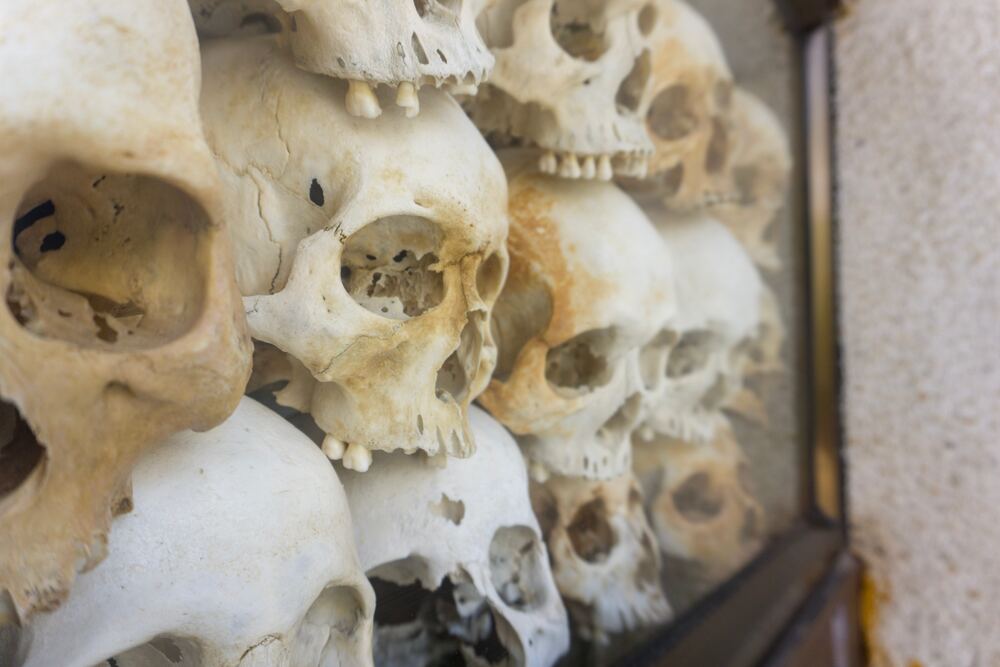
Though it may not be the most cheerful spot in Phnom Penh, visiting the Choeung Ek Genocidal Center is a profoundly significant and reflective experience that you shouldn’t overlook.
This site stands as one of the most crucial memorials honoring the victims of the Khmer Rouge regime, which ruled Cambodia from 1975 to 1979, leading to the deaths of around 1.5 to 3 million individuals.
Known as the Killing Fields, this place bears witness to the horrific events of this dark chapter in Cambodia’s history.
You can stroll through areas where mass graves lie and see locations that were used for torture. Make sure to grab the audio guide for informative insights. It provides detailed knowledge and enables visitors to understand the atrocities that occurred here while paying homage to the victims.
Though it’s not the lightest of experiences, visiting the Choeung Ek Genocidal Center is a crucial reminder of the perils of totalitarianism and the necessity to remember past tragedies.
15. Discover Stunning Art at the National Museum of Cambodia
The National Museum of Cambodia is a breathtaking venue housing the largest collection of Khmer art and artifacts globally, including various sculptures, ceramics, and textiles from Cambodia’s extensive history.
You can explore exhibits that cover time periods from prehistoric times to the present, with a particular emphasis on the Angkor period, spanning from the 9th to the 15th centuries.
Here, you’ll gain insights into the ancient Khmer civilization, their remarkable artistic and architectural achievements, as well as the challenges they encountered over time.
What makes the National Museum of Cambodia special is not only its extraordinary collection but also the exquisite architecture of the building, inspired by traditional Khmer design, featuring a lovely central courtyard flanked by galleries.
16. Visit Koh Dach (Silk Island) and Discover Silk Weaving
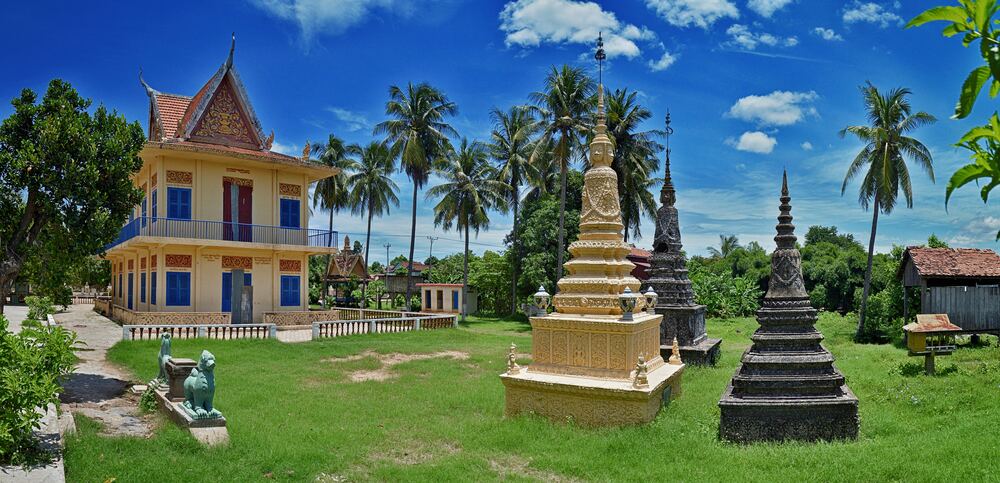
Take a delightful break from the city’s hustle and bustle by visiting Silk Island.
This quaint island nestled in the Mekong River is renowned for its picturesque landscapes, traditional weaving techniques, and serene ambiance.
You can wander through local villages and learn about the silk weaving process that’s been cherished through generations.
Witness skilled artisans crafting intricate designs on traditional looms, and feel free to buy exquisite, handmade silk products as souvenirs.
Koh Dach also offers a peaceful retreat with several quiet beaches and scenic viewpoints where you can enjoy the stunning Mekong River and the surrounding nature.
17. Visit the Iconic Independence Monument
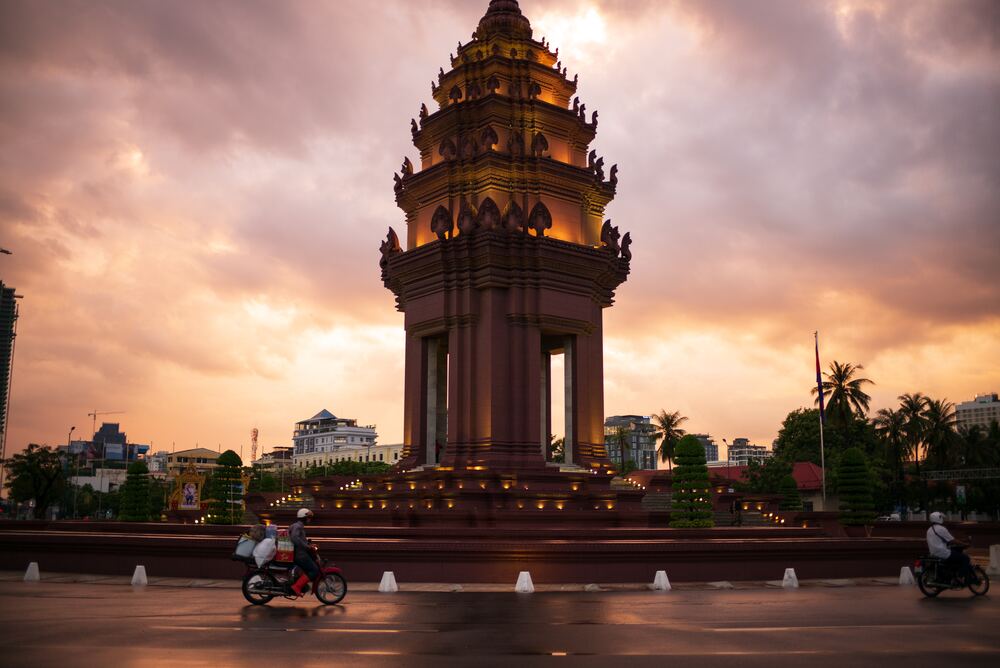
The Independence Monument stands as one of the most recognizable landmarks in Phnom Penh.
This magnificent structure was constructed in 1958 to honor Cambodia’s liberation from French rule in 1953.
It showcases elaborate carvings and beautiful architecture, reflective of traditional Khmer style.
The monument is surrounded by a lush park, serving as a favorite spot for locals to relax and enjoy nature.
Additionally, the area around the monument features numerous shops, restaurants, and cafés, making it a great place to have a meal or shop for souvenirs.
Where to Stay in Phnom Penh
You’ll find various budget-friendly guesthouses on the Golden Mile on street 278, aptly named as most guesthouses incorporate the word ‘golden’ in their title.
A fantastic modern hotel in an ideal spot is Citadines Flatiron Phnom Penh. It boasts friendly and helpful staff as well as clean and comfortable rooms.
For a mid-range accommodation, I highly recommend the Plantation Urban Resort & Spa. It features a refreshing swimming pool, perfect after a hot day of exploring, and serves delicious Khmer and Swiss cuisine.
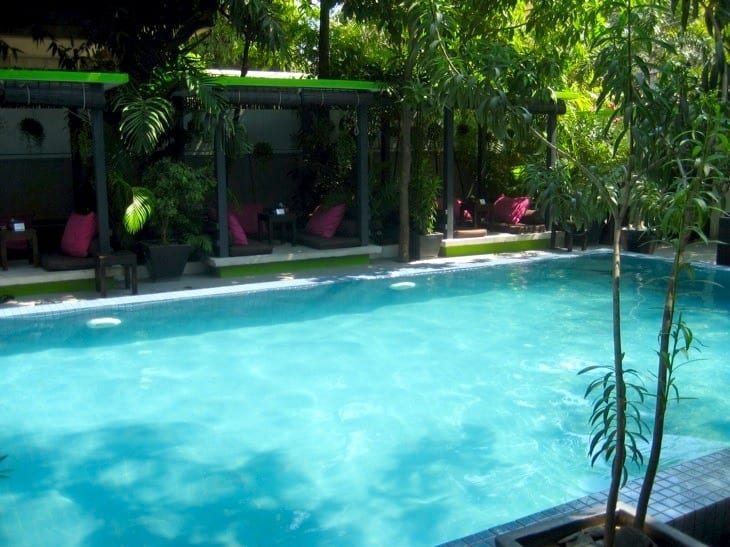
If you’re looking for more upmarket options, I suggest Raffles Le Royal Hotel, which boasts stunning architecture, luxury amenities, delectable high tea, and a fantastic swimming pool.
For more accommodation options in Phnom Penh, explore the largest selection of hotels, apartments, and guesthouses through our various partners using the map below.
Getting to and Around Phnom Penh
Sadly, there …
There are no direct flights available to Phnom Penh from Europe, the US, or Australia; travelers must make a stop in either Bangkok, Singapore, or Kuala Lumpur and transfer there.
Air Asia is a well-known budget airline in Asia, serving most major cities. While it has its pros and cons, you can generally find very affordable fares and a reliable service.
Taking a bus is a cheaper option, albeit a slower one. If you’re coming from Vietnam, you can opt for a bus or boat from Ho Chi Minh City.
The bus journey takes around six hours and is quite comfortable. On the other hand, the boat ride is about four hours long and offers a scenic view through the Mekong Delta.
Buses are also available from Bangkok, but expect a full day of travel with several changes. Coming from Pakse in Laos will take roughly 15 hours by bus.
Getting Around in Phnom Penh
Unlike other major Asian cities, Phnom Penh lacks a public bus or metro system. To get around, you can choose a tuk tuk or a moto taxi.
These modes of transport are plentiful, and you’ll find offers for rides almost immediately. Motos tend to be cheaper, but don’t count on them providing a helmet.
Personally, I prefer tuk tuks for their safety and comfort—they allow you to enjoy the views while you travel. Make sure to negotiate the price beforehand, which usually falls between $2-$4 based on your destination.
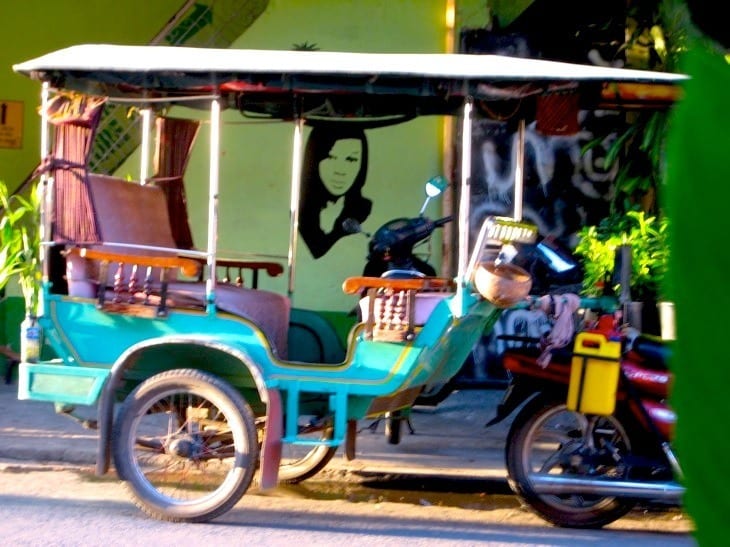
Phnom Penh isn’t particularly pedestrian-friendly, but you can also use Grab or Bolt to request bikes and taxis.
When is the Best Time to Visit Phnom Penh?
Cambodia experiences three seasons: the hot season (November to January), the very hot season (February to May), and the rainy season (June to October).
During the hot season, average temperatures hover around 32°C (89.6°F), making it an enjoyable time to visit.
The very hot season can be extreme, with temperatures soaring between 39°C-42°C (102°F-107°F).
The rainy season also has its charm, as the rice fields turn vibrant green and the afternoon showers provide some relief from the heat.
Is Visiting Phnom Penh Worth It?
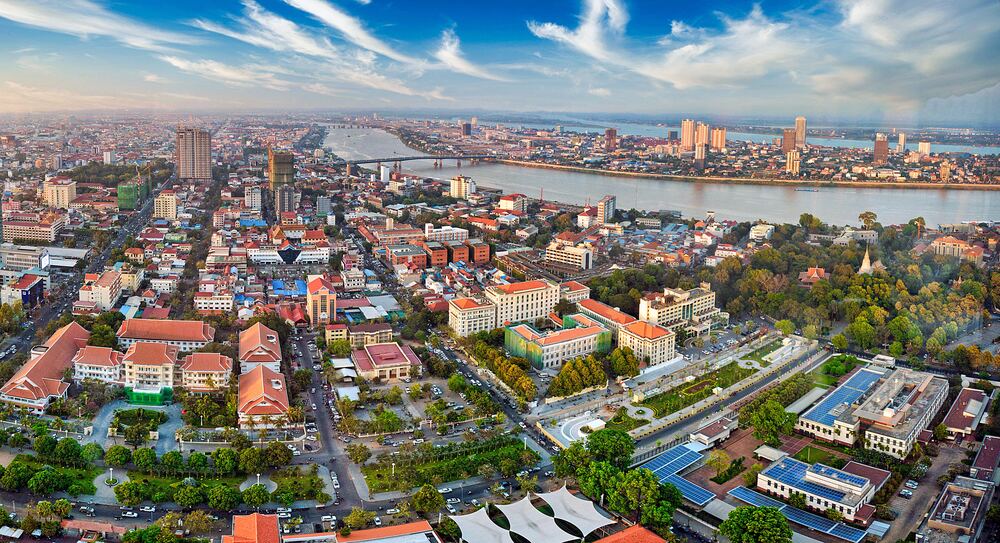
While many travelers simply stop in Phnom Penh on their way to Angkor Wat in Siem Reap, I believe it deserves more attention and shouldn’t be overlooked.
Phnom Penh today has transformed dramatically compared to ten years ago when traditional wooden houses occupied the landscape, rice paddies bordered the river, and UN vehicles were a common sight on dusty roads trying to restore peace to a war-torn nation.
Now, you’ll find well-maintained roads, modern bars and restaurants, shopping centers, towering buildings, and numerous historical sites. Phnom Penh is on the rise.
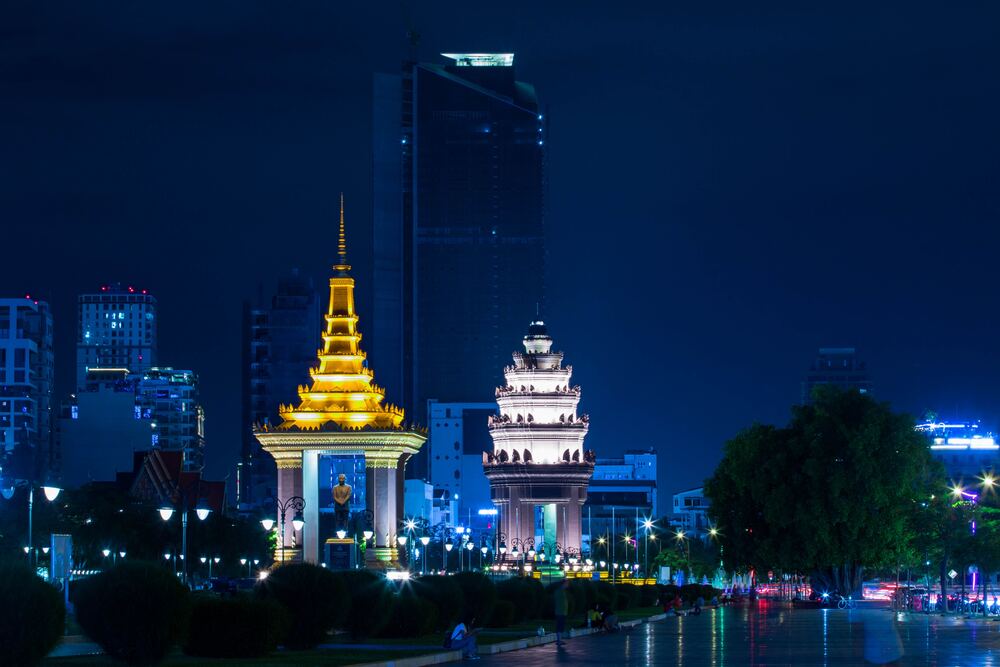
For me, the allure of Phnom Penh lies not just in its sites but also in the warmth of its people and the overall atmosphere. Compared to bustling Asian cities like Bangkok, Phnom Penh strikes a perfect balance as a mid-sized city that feels more laid-back.
If you’re traveling in Cambodia, consider spending at least 2 or 3 days in Phnom Penh. This duration allows you to experience the city’s highlights and its unique vibe.
Slow down, take leisurely strolls, and discover the hidden treasures of this gem in Southeast Asia.
Popular Tours in Cambodia
What are you most excited to experience in Phnom Penh? Feel free to share your thoughts in the comments.

